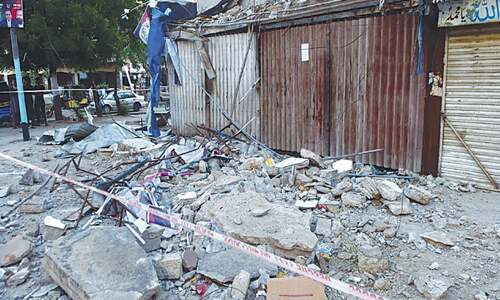KARACHI: The Istanbul Declaration recently released at the conclusion of an international conference in Turkey called upon the Organisation of Islamic Cooperation (OIC) countries to support efforts for preserving universally recognised and regionally important sacred sites such as Al-Aqsa Mosque and heritage sites in Nagorno-Karabakh and India-held Kashmir from man-made damage including excavations, site alterations and overlapping developments in accordance with the OIC charter.
This information was shared by Prof Noman Ahmed, the chairman of NED University of Engineering and Technology’s department of architecture and urban planning who represented Pakistan at the event.
He spoke to Dawn about the moot’s significance and its highlights.
The moot — Protecting the Cultural Heritage of the Muslim World — was convened by the OIC General Secretariat, OIC Research Centre for Islamic History, Art and Culture and the Islamic Educational, Scientific and Cultural Organisation.
Sites in India-held Kashmir under particular threat
“This was the first meeting of its kind in recent times. It provided an excellent opportunity to eminent experts from across the world to assess the state of cultural heritage in the Muslim world particularly that either exist in conflict zones or lies under foreign occupation, evaluate preservation efforts and recommend measures,” Prof Ahmed said.
Sharing details, he said one important feature of the conference was his team’s paper on the status of heritage in India-held Kashmir.
“We succeeded in convincing the OIC to include occupied Kashmir as a conflict zone where Muslim heritage is affected very intensely. The Istanbul Declaration mentions Kashmir as an important heritage issue for the Muslim world,” he said.
Asked about how his team collected data on heritage sites in held Kashmir, he explained that his team used sources to acquire information and also invited a few scholars from India-held Kashmir to a conference in Karachi.
“We took help from technical journals and newspapers printed there as well as people working there. Our findings showed that the biggest threat to historical sites in the occupied region is communities’ lack of access to these places. This Muharram, too, people were not allowed to visit their sacred sites,” he explained, adding that Srinagar had a number of significant historical sites.
Due to continued violence, he said, local pundits had also left their aesthetically constructed residences called Pundit Houses, an architectural asset. “The sites have no protection from natural or man-made hazard since the city administration is dysfunctional, though sites in the suburbs are comparatively safe.”
Violence, he said, had also badly impacted people depending on the Dal Lake, once an important tourist site, for their livelihood. “Kashmir’s heritage is a shared asset between Pakistan and India. Its destruction would be a mutual loss. We must preserve [it].”
The other paper from Pakistan’s side was presented by Lahore-based architect Taimoor Khan Mumtaz. He covered the importance of Muslim architecture from the Mughal period and its implications on later architectural developments in the country.
“The gist of his presentation was that Pakistan has many Mughal and pre-Mughal period assets but there is not much public awareness about them. He was of the view that the principles of geometry, composition and craftsmanship applied in their construction are still applicable.”
On the OIC’s efforts in the field of preservation, Prof Ahmed said its major achievement was the restoration of Mostar city in southern Bosnia. Most historical sites badly damaged by war were completely restored in 2004. A decade of more work saw restoration of public spaces in 2014.
Some other recommendations of the conference were: link policies of cultural heritage protection with policies aimed at countering violent extremism, extremism, religious and cultural discrimination, xenophobia and Islamophobia according to the relevant stipulations of the UN charter and its principles; identify the economic, social and tourism aspects of cultural heritage in its different types and categories and set aims and programmes to develop and make better functional use of those aspects; cooperate to improve formal education and professional training on protection of cultural heritage with due attention to the cultural heritage needs of the Muslim world; invite states and institutions to implement joint projects that would create awareness of the authenticity and timeless importance of urban heritage of the Muslim world.
Published in Dawn, November 15th, 2017














































Dear visitor, the comments section is undergoing an overhaul and will return soon.